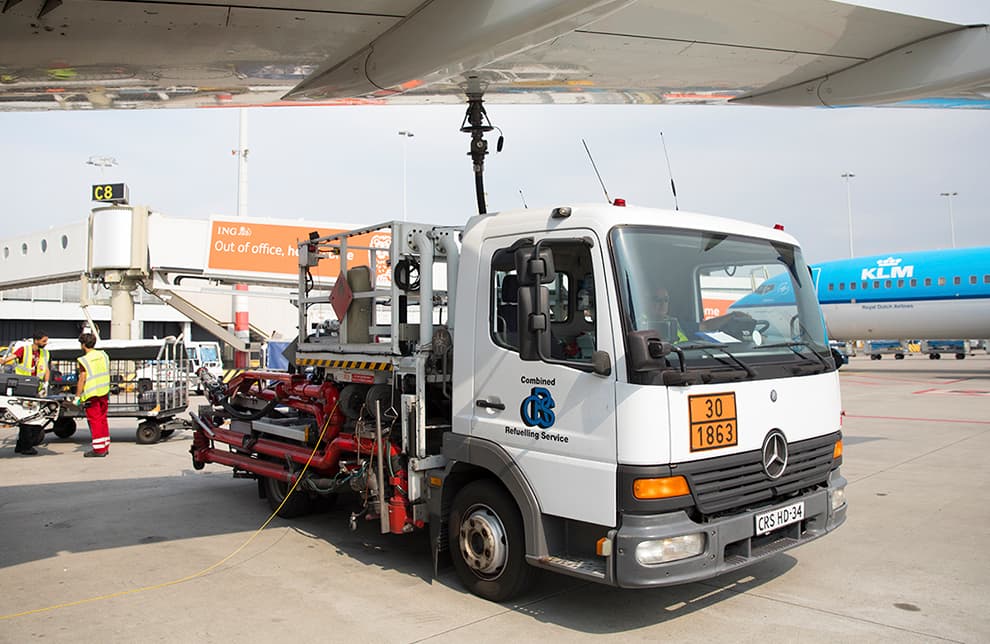How planes are refuelled
Refuelling a plane is quite similar to the way that you might fill up a car. The question is whether it needs to be refuelled every time a plane lands – this page explains how it all works.
There are 2 ways to refuel an aircraft. Most of the time, planes are refuelled using a dispenser and a so-called ‘hydrant pit’. A hydrant pit is where passengers board through the gate, and where baggage and meals are taken on board. It is situated at the aircraft stand. A system of pipes lies beneath the hydrant pit. A special truck known as a ‘dispenser’ connects a hose to the hydrant pit. The other end of the hose is connected to the wing of the aircraft so that it can be refuelled. This (picture left) is what a dispenser looks like:


The filler cap location
2 hydrant pits are provided at each aircraft stand. They are situated on the left and right-hand sides of the aircraft. Sometimes the plane will only have a ‘filler cap’ on the left or right, just like a car; or the plane will be refuelled on one side with meals loaded on the other side. It’s useful to be able to refuel the plane on the most convenient side. There are hydrant pits in the ground at almost every stand where passengers can disembark using a passenger bridge. The only exception is Gate C4 because the baggage basement is under it.
Aircraft stands that are not connected to the terminal by a passenger bridge – where passengers disembark using stairs – don’t always have a hydrant pit. That means those aircraft will be refuelled by tankers. They connect their hose to the wing and can directly refuel the aircraft.
Pay at the pump
The similarity between filling up a plane or a car does not end with the filter cap. Several fuel providers have agreements with airlines to refuel their aircraft. There are 3 different fuel companies at Schiphol. They use a metering system, just like when you fill up your car at a petrol station – except that the pilots don’t have to pay at the pump.
To refuel or not to refuel?
Cars do not need to be filled-up after a short journey, and neither do planes. If it still has enough fuel, it can leave again without refuelling and take passengers straight to their destination.
Read the previous blogs
-
Quickly going from Schiphol to Amsterdam by train
Published on:Travellers flying from Schiphol often take the chance to visit Amsterdam. Whether you got off the plane or the train, you can be in Amsterdam in 17 minutes.

-
Superstition in the air
Published on:Throwing coins at the aircraft, always eating the same meal before a flight. Aviation is no stranger to superstitions.

-
Flying eye-catchers attracting a lot of attention
Published on:We see a large number of aircraft at Schiphol, so we’re not that easily impressed. But sometimes special planes come along that do attract a lot of attention.
